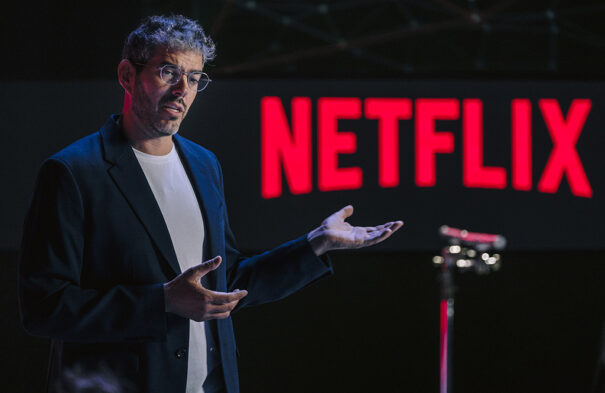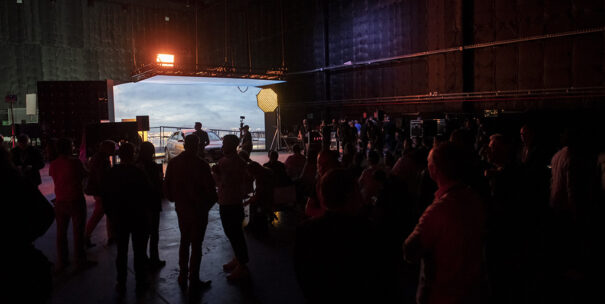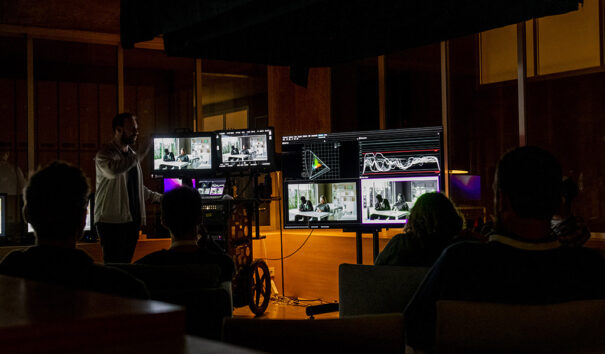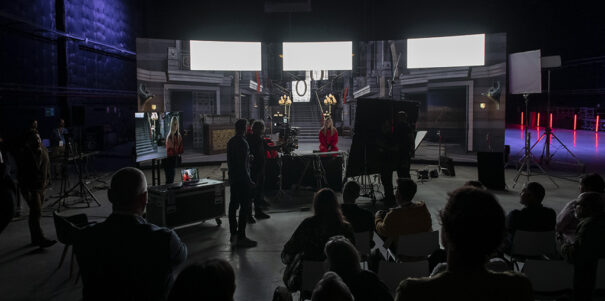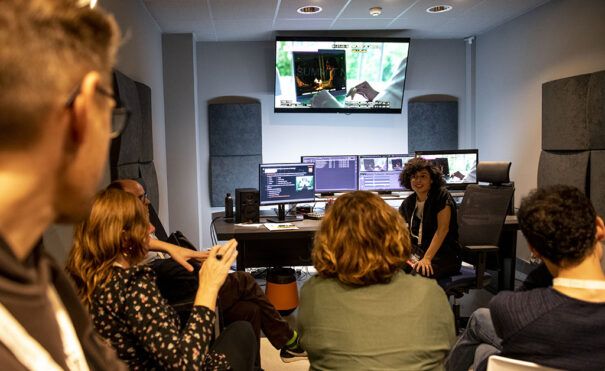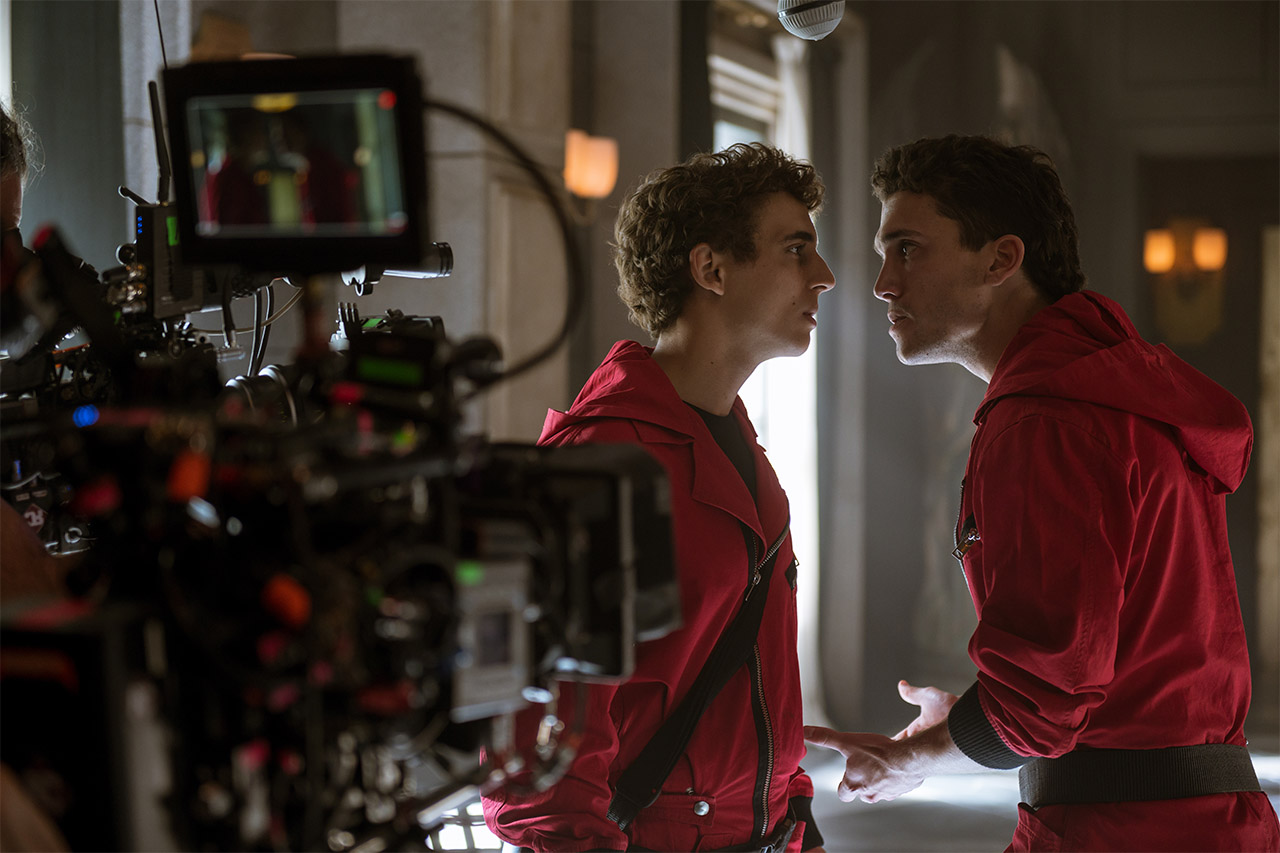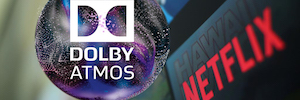¿Cómo aborda Netflix España la postproducción? Una entrevista con Víctor Martí
Víctor Martí, post-production director of Netflix in Spain and Portugal, reveals in this interview all the conceptual and technological keys to the American multinational's post-production treatment.
The bet of Netflix for Spain is beyond any doubt. The video-on-demand platform (and who knows what its future will bring) has put Spain in the global spotlight of audiovisual production with the consolidation of its studios in the Madrid Content City. The creative talent of production companies like Vancouver Media (Sky Rojo, La casa de papel), a friendly policy towards foreign productions on the part of the administrations, and the solvency, talent and preparation from Spanish industry have ended up consolidating a attractive present and a promising future in a certainly uncertain context.
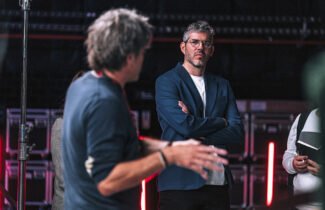 In parallel to the production of content, the post-production proliferates adopting avant-garde flows, first class facilities con high security measures and one Open mentality to embrace new technologies such as virtual production, of which many originals of Netflix, like the imminent 1899, They are benefiting.
In parallel to the production of content, the post-production proliferates adopting avant-garde flows, first class facilities con high security measures and one Open mentality to embrace new technologies such as virtual production, of which many originals of Netflix, like the imminent 1899, They are benefiting.
Even with everything, still challenges to address. The Spanish post-production industry is in a crossroads: you can continue to maintain your current production, or take the leap to become a European and global reference. To achieve it, as identified Victor Martí, must face important changes in accordance with the sign of the times.
Martí, executive responsible for the Netflix post-production in Spain and Portugal, not only addresses in this interview the most pressing news of Spanish and Portuguese post-production. It also opens the doors to work methodology, las key technologies and the next initiatives of the platform in Spain.
New horizons for creativity
How is Netflix helping to grow the post-production industry in Spain?
One of the priorities, through our production center and our productions, is to bring the professionals with the latest production and post-production technologies and best practices so they can take their creative ambition to new horizons. As an example, when we arrived in Spain in 2018, no project had yet been produced in Spain with an image in HDR (High Dynamic Range, high dynamic range). The first show we completed with this technology was Criminal, in summer 2019. Since then, we have already released more than 60 productions with this type of mastering in Spain. We have achieved this by doing training project by project and technician by technician. In order to scale these efforts, we recently organized the first Post Production Summit in our facilities Madrid Content City (in Tres Cantos), a cycle of eminently practical training sessions on post-production, visual effects and virtual production. In addition, we actively collaborate with leading entities in the Spanish audiovisual industry, such as ECAM, TAI y ESCAC. As an example, in the case of ECAM and ESCAC, we have collaborated to carry out their two master's degrees in Supervision and Coordination of Post Production, helping to define the training plan to adapt it to the needs of the current industry. We also regularly collaborate with Masterclass in their centers.
“When we arrived in Spain in 2018, no project had yet been produced in Spain with an image in HDR. (…) Since then, we have already released more than 60 productions with this type of mastering in Spain.”
What is the work that Netflix undertakes to coordinate the post-production of its fictions?
In any project Netflix we always ask that there be a post-production supervisor or coordinator. We do not see it possible to start production without having this position covered. Is a key figure for the management of audiovisual projects that ensures that the post-production schedule, the agreed image and sound workflow and the budget defined for these items are met. With the rapid evolution of visual effects, virtual production, high dynamic range workflows and surround sound systems, these professionals are essential for the good purpose of any audiovisual product.
Challenges for Spanish postproduction
What are the main limitations of the post-production industry in Spain, as you have seen after having an important role in the market in recent years?
The main challenges facing the post-production industry in Spain are the lack of professionals in the sector with updated technical capabilities, mainly because of the lack of regulated studies and for the constant technological change. In the past, there have been no schools that taught this knowledge and the few that did, had poorly adapted training programs to the current needs of the market and its structural and technological demands. Furthermore, the emergence and rapid evolution of post-production technologies since the arrival of the digital era draws multiple challenges for the industry in this field, which has to be in constant development and training.
How has the treatment of post-production evolved in recent years? What are the latest most common technical requirements in your productions?
The most common technical requirements that we currently ask for in Netflix productions are work in UHD resolutions o superiors, con high dynamic range mastering, in our case HDR Dolby Vision, and Dolby Atmos surround sound. In addition to these mastering features, for us it is very important to achieve workflows with good color management, “color management workflows” in English. This allows us to have a consistent image in all phases of production, knowing that we are all working in the same color space and that Netflix executives, producers and creators are seeing the same thing. With this, the parties involved in the creative processes can have a objective and efficient creative communication, and not waste time on formal doubts. This way of working provides many benefits in the production chain. Allows us preserve the creative intention of the authors throughout the post-production chain; improve communication between teams; allows you to save time and, therefore, money, in color processes and visual effects, and, finally, allows you to improve the product creativity in each of the phases of the project.
Netflix, hand in hand with the industry
How does Netflix work with post-production companies? Are there a series of requirements that you set in terms of quality and safety to be able to work with some of your productions?
Netflix always produces in Spain through local producers. These production companies are in charge of choosing the technical equipment y a los service providers to bring production to fruition. For original series and movies, we can work with any post production company that the production company in charge of the project chooses. The only requirements we ask for are that the chosen post-production company wants to learn to work with our workflows y our mastering technologies, That this equipped for it and follow some simple computer security measures.
“Netflix allows you to work with any software or hardware available on the market that is capable of manage workflows that we recommend and that they can master in the agreed technical specifications.”
Is Netflix promoting alliances with specific technological partners to improve the workflows of its productions?
No. Netflix allows you to work with any software or hardware available on the market that is capable of manage workflows that we recommend and that can be mastered to the agreed technical specifications. The only choice that Netflix has made globally has been to choose Dolby as a system HDR and surround sound broadcast to offer our users the best possible experience. Dolby technologies allow us simplify post-production workflows, reducing the number of final materials among others, while offering our subscribers the better image and sound quality available right now on the market.
How has the Netflix post-production team in Spain adapted to collaborative workflows, which are increasingly common in all types of productions?
El próximo November 22th We are going to present the expansion of our production center, with which doubles your number of dishes (which go from five to ten) and incorporates nuevas instalaciones de postproducción so creators and producers can bring their best stories to life. In that sense, among the main innovations that we are going to incorporate at the post-production level are a filming laboratory y state-of-the-art assembly rooms unique in Spain that combine the latest technologies and will promote collaborative work, in the cloud and remotely between professionals.
Virtual production, HDR, WCG…
What is the role of post-production companies in the virtual production workflows that Netflix, among many other agents, are incentivizing for their performance and reliability?
We must understand the producción virtual as a methodology that brings together different technologies, and consequently, the responsibilities and functions of post-production companies do not they differ so much from their usual powers. We can say that in these highly technical environments, the Color consistency and thoroughness of workflows They become even more important because the material captured on camera already incorporates part of the post-production work directly into the final image. This technology is constantly evolving and uses both hardware and software components that were not created specifically for cinema, adding an extra degree of complexity. In this sense, Netflix, through the dissemination of best practices and the support it provides to its productions, contributes to expanding knowledge to get the biggest match possible to these methodologies and help raise knowledge in Spain.
“From the Netflix post-production team we give absolute freedom for creators for them to decide on the visual invoice of the series. We cannot make creative decisions based on the viewing conditions of our particular content of each user.”
What is Netflix's position on concepts like HDR or WCG? Is its application and introduction favored in each original? Does it depend on each project?
Since our arrival in Spain, we have been strongly committed to HDR, high dynamic range, and with it also for a colors closer to reality (Wide Color Gamut). Dolby's HDR, Dolby Vision, allows us simplify post-production processes and have a more reliable final distribution of the content, preserving the creative intention of the authors as much as possible. As we have indicated, Netflix has encouraged the use of this technology since our arrival in Spain and currently we already have more than 60 local titles available in our service with this type of mastering. During these 3 years we have achieved change local industry to the point that there is no Netflix Spain fiction project that is not completed with this technology. He HDR In the end they are better pixels, with more dynamic range, brighter whites and deeper blacks, and with more colors. It is a technology that is here to stay and that allows us protect the creative intent of our creators and that it lasts over time regardless of the distribution channel or support.
Are there recommendations from the Netflix Spain post-production team regarding the visual bill of the series, knowing the conditions (mobile consumption, difficult lighting) to which it is subjected when viewing the content?
No, from the Netflix post-production team we give absolute freedom for creators for them to decide on the visual invoice of the series. We cannot make creative decisions based on the viewing conditions of our particular content of each user. What we do work on is so that the final representation is as faithful as possible to the mastering, whatever the distribution medium. To achieve this, we distribute our content in HDR Dolby Vision format, which has, among others, dynamic metadata for correct visual translation to any emission support HDR o SDR and that uses a absolute luminance curve which prevents changes in the luminance of the image frame when the tv brightness.
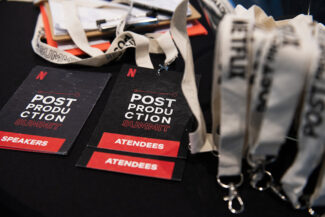 La Post Production Summit de Netflix
La Post Production Summit de Netflix
Recently, Netflix hosted its Post Production Summit in Madrid. What is the balance of the edition?
The balance is very positive. During the almost three weeks of duration, the Post Production Summit se ha convertido en el meeting and discussion point of production in our country. About 300 participants, from producers and technicians of the creative community and students and trainers from film schools, have had the opportunity to come into contact with the best practices in post-production and the cutting-edge technologies at the service of creativity, such as the virtual sets (state-of-the-art LED screens), which we built for this initiative. One of the objectives we had set for ourselves was to contribute to reduce the technical gap and the lack of professionals in some of the currently most in-demand positions, such as post production supervisors, visual effects producers y technicians specialized in virtual production. We will see over the next few months if all these objectives have been met, but we are very happy with the impact, reception and participation of the entire industry in these days.
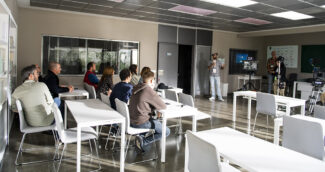 Could you identify the main lessons learned from this event?
Could you identify the main lessons learned from this event?
Beyond the technical and theoretical knowledge acquired by all participants, we have detected a need in the sector to find y to debate in relation to the latest generation production technologies. The pandemic and the daily workload they have not allowed forums where we can jointly analyze the technological changes and challenges that we face every day. The Summit has generated spaces for reflection, debate and confrontation of ideas among professionals in the sector at a time when they were greatly needed. We have seen how companies compete with each other every day shared knowledge and experiences with others generously seeking joint growth as an industry. Likewise, spaces for communication have been created and, I hope, for unity between production technicians, filming, and post-production professionals. Two worlds that, due to the very nature of their work spaces, have remained too stuck in the past, but that we should get even closer to be at the level of the more technical and advanced industries.
Challenges for the Spanish (and global) post-production industry
What are the main challenges that the Spanish post-production industry will have to face in the near future to maintain its relevance?
Spain has the unique opportunity to consolidate as a international reference in post-production, visual effects and virtual production, at the level of the most technical industries. To move towards this horizon, as I mentioned previously, training, the creation of spaces for debate and collaboration and communication between teams are going to play a key role.
And at a global level? What challenges will the post-production industry have to face in the coming years?
Over the next few years, the post-production industry will face new technological changes, Like the jobs in the cloud, remote or automation of certain processes of little added value. All of this to improve collaborative work, be more efficient and thus dedicate more time to creative processes, which is ultimately what should allow us to differentiate ourselves. We have a lot of talent and potential in the creative and We must continue to advance in the knowledge and use of new technologies to put them at the service of creativity and thus become an international benchmark in the areas of post-production, visual effects and animation. We must continue the path we have started, being curious, embracing technological changes, learning from each other and collaborating to grow together.
An interview by Sergio Julián Gómez
Did you like this article?
Subscribe to our RSS feed and you won't miss anything.



